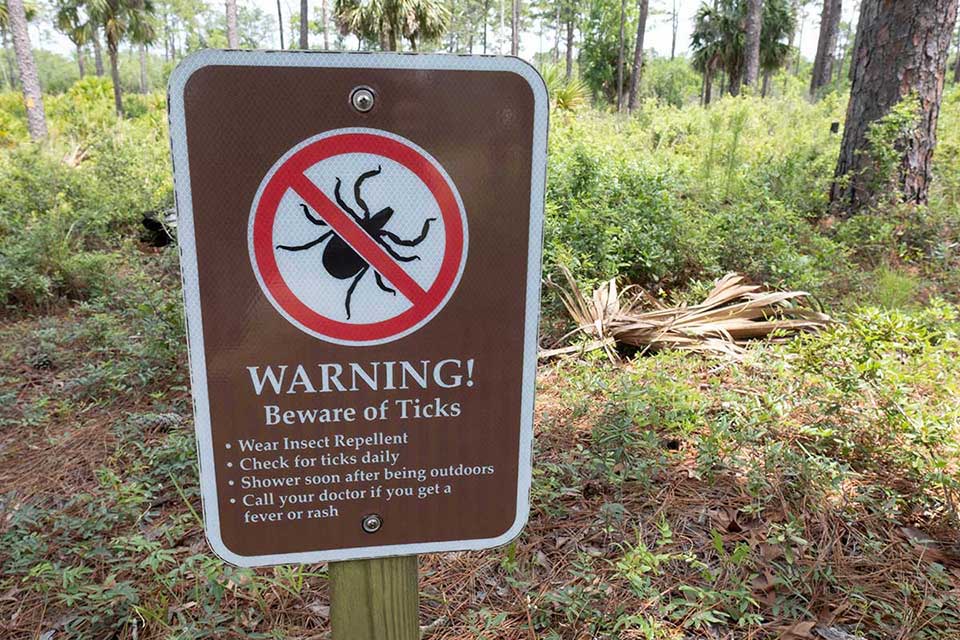Let’s Talk Ticks: An MGA Faculty Q&A With Dr. Tyler Achatz
Author: Sheron Smith
Posted: Monday, August 4, 2025 12:00 AM
Categories:
Pressroom | School of Health and Natural Sciences
Macon, GA

Ticks may be tiny, but their impact on health can be significant. As temperatures rise, these blood-feeding parasites become more active, increasing the chances of encounters with people and pets. This year, Georgia is experiencing a particularly heavy tick season, likely due to a combination of warmer-than-average temperatures, high humidity, and thriving wildlife populations that provide ample hosts. We spoke with Dr. Tyler J. Achatz, an expert in parasitology and MGA biology faculty member, to learn why tick activity spikes in summer and how you can reduce your risk.
Why does tick activity seem to spike in the summer?
Ticks in many parts of Georgia are active year-round, but warmer weather certainly increases their activity. Like many other animals, ticks become more active in warm conditions. They feed on the blood of hosts such as deer, dogs, and humans. Summer is a time when wildlife is more active, and warm temperatures also encourage more people to engage in outdoor recreational activities. Simply put, this creates more opportunities for ticks to feed and reproduce.
How do environmental factors like temperature, humidity, and wildlife populations influence tick abundance and behavior in our region?
Ticks require certain conditions to survive and are generally most active between 40°F and 80°F. However, many species remain active even into the low 100s. Ticks also prefer humid environments due to the way they breathe, and the high humidity in our area is ideal for their survival. Importantly, different tick species inhabit different environments. For instance, deer ticks (Ixodes scapularis) primarily live in forested areas, while dog ticks (Dermacentor variabilis) are more commonly found in fields and parks. Although these ticks can use the same animal hosts, their preferred habitats tend to support different host species. Deer are more likely to inhabit forested areas, putting them in frequent contact with deer ticks. Dogs, on the other hand, are often taken for walks in parks and fields, increasing their exposure to dog ticks. Some animals, such as raccoons, routinely come into contact with both tick species. Any increase in host populations leads to more opportunities for tick populations to grow.
What are some of the most common ticks people in our region might encounter, and what health risks do they pose?
The most common ticks you may encounter in our region are deer ticks, dog ticks, and lone star ticks. Each of these species is associated with different health risks. Deer ticks (Ixodes scapularis) are best known for spreading Lyme disease. Dog ticks (Dermacentor variabilis) can transmit Rocky Mountain spotted fever and may also cause tick paralysis. Bites from lone star ticks (Amblyomma americanum) can lead to alpha-gal syndrome, which is essentially an allergy to red meat. These ticks can also transmit many other viral, bacterial, and protozoan diseases to both humans and pets. However, it's important to note that not every tick is infected with a pathogen.
What simple steps can people take to protect themselves and their pets from ticks when spending time outdoors?
Ticks are a natural part of our environment. While we can't completely avoid them, certain behaviors can help reduce the risk of tick bites. Bug spray can help keep ticks off your body, but it is rarely 100 percent effective. It's best to wear closed-toed shoes along with long pants and long-sleeved shirts. Tuck your pants into your socks to further reduce the chance of ticks crawling into your clothing. There is also commercially available clothing treated with permethrin (an insecticide) that is often effective at keeping ticks away. Always perform a thorough tick check after any outdoor activity. Keep in mind that some ticks can be as small as the tip of a pencil! Pets should also be given regular flea and tick prevention treatments. While these won’t stop ticks from climbing onto your pets, they do offer protection if the ticks try to feed. Be sure to check your pets for ticks as well.
If someone finds a tick on themselves, what’s the best way to remove it?
Ticks frequently climb onto people and pets. Unless a tick has attached and begun feeding, there is usually no health risk. Even if feeding has started, most tick-borne diseases require the tick to be attached for at least 4 to 24 hours before transmission can occur. Ticks should be removed as soon as they are found. Use fine-tipped tweezers to grasp the tick as close to the skin as possible, then pull upward with steady pressure. After removal, clean the bite area thoroughly with soap and water. If you have any concerns about possible infection, seek medical attention promptly.
Dr. Tyler J. Achatz is director of MGA’s Office of Research and Sponsored Projects and assistant professor of biology. He is associate editor of both the Journal of Parasitology and Systematic Parasitology. He will soon lead a tick pathogen surveillance project for the University.
Note: The health suggestions here are from the Georgia DPH [All about Ticks: Common Human-Biting Ticks in Georgia]